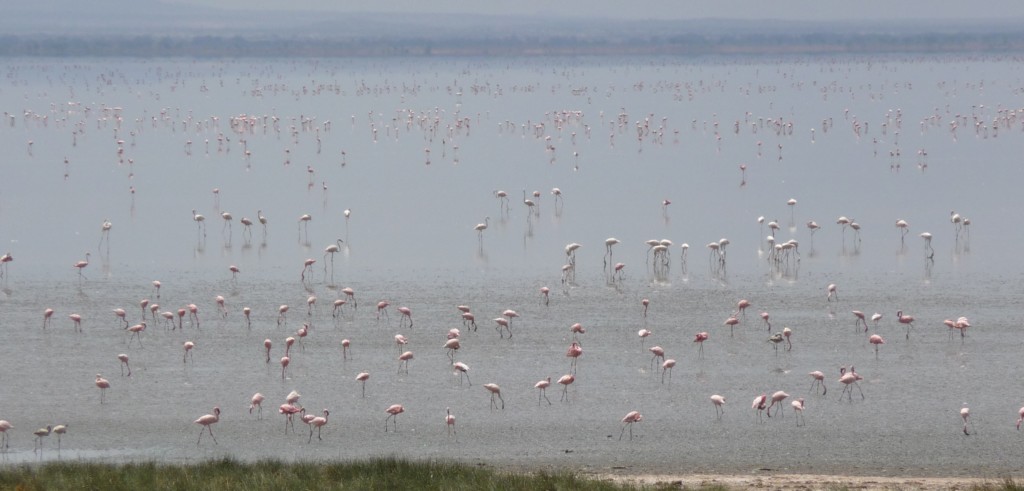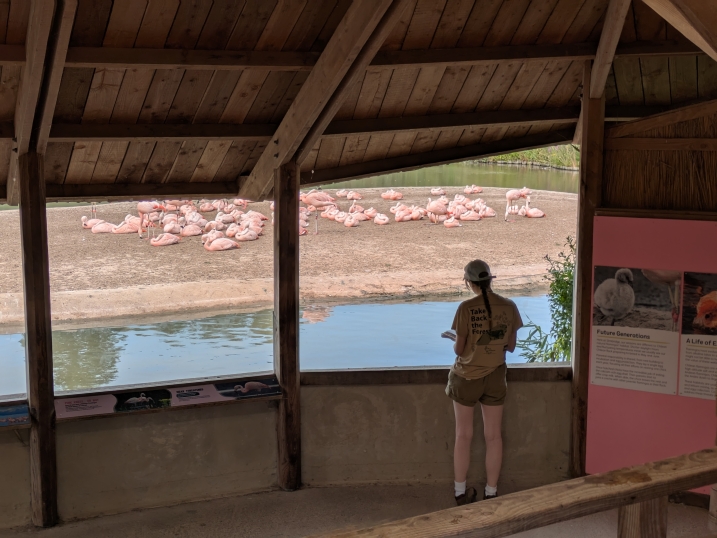Why the flamingos we keep can help those out in the wild.
A new paper out in the scientific journal "Ecology & Evolution" provides an interesting insight into how captive flamingos can help with research that ultimately benefits wetlands and wild birds. Flamingos are a flagship species for wetland conservation, meaning they are familiar to many people and can be used to draw attention to the wider plight of a habitat or ecosystem. Flamingos are also a keystone wetland species meaning they enable other animals to live in the same habitat as they do; their actions, movements and behaviour help mould and shape features of an ecosystem creating areas for other species to thrive in. You could say that once you lose the flamingos, you lose other forms of life from the same area too. With this in mind, scientists investigating the productivity of wetlands have used captive flamingos at a zoo in Switzerland to determine how the flamingo's unique feeding style affects how much energy it can get from the food in its habitat.
[yframe url='http://www.youtube.com/watch?v=yOB2NqiPU-4']
As you will no doubt be familiar, the flamingo's bill contains fibrous bristles that the bird uses to sieve organic material from the water, in a similar way to how the huge blue whale collects its food (squint a bit and you might see the resemblance!). This feeding method, although highly evolved to the flamingo's environment, actually limits the amount of food the flamingo can ingest at any one time. There might be masses and masses of food around, but the flamingo cannot shovel it in really quickly as its beak can only cope with a certain amount of food at a time. If you imagine trying to eat some ice cream with a teaspoon. You have access to an endless amount of ice cream but you can only eat the amount that your teaspoon holds; your intake of ice cream is regulated by the size of the spoon that you are using. The same is true of the flamingo and its beak.
So what does this mean for conservation and why are captive birds involved? Well, by testing the amount of food that a flamingo can eat over a given time will tell those managing habitats how much food a flock of flamingos needs to keep them alive. This way, the habitat can be preserved and managed to encourage the growth of the right sorts of food that flamingos consume. By feeding captive birds the same types of food that they would eat in the wild (brine shrimps, worms, fly larvae, plant material) scientists can accurately measure how much food a flamingo can eat at a time, and how much energy it is getting from this food. What the researchers have noticed is that even if you give flamingos masses and masses of food, they are unable to consume more and more and more. Because of how their beak limits what they can consume, as I said above.
Therefore, it is important that we keep wetlands safe, healthy and productive to ensure that flamingos have consistent amounts of food available to them all through the year, so they are able to feed naturally in the time that they need to consume all they need for their energy demands. Without the use of zoo-housed flamingos to enable these results to be gained, we would not understand how vitally important quality wetland sites are for flamingo feeding behaviour and long-term survival.

*Reference: Ecology and Evolution, Volume 3, Issue 5, May 2013, Pages: 1413–1425



